Assess pre-K–12 student learning


in-person or remotely
Star Early Literacy
Star Reading
Star Math
Star Assessments in Spanish
Star Custom
Star CBM
Star CBM Lectura
Star Phonics
Schoolzilla Starter
Play Video


Star Early Literacy
Star Reading
Star Math
Star Assessments in Spanish
Star Custom
Star CBM
Star CBM Lectura
Star Phonics
Schoolzilla Starter
Play VideoAssess
Valid and reliable assessments designed to give you the most information in minimal time.

Review Reports designed for teachers and administrators to provide the information you need to prioritize student need and appropriately allocate resources.
Instruct Personalize instruction with thousands of resources aligned to skills that target what each student needs.
Grow Guide more growth for every student using the most comprehensive pre-K–12 interim and formative assessment suite available.
The data and insight you need to address all your assessment questions and inform instructional decisions.
Trust the validity and reliability of Star data, backed by research, validity studies, and millions of data points.

Powerful Cutting-edge learning science, data analytics, and test design deliver maximum impact in minimal time.
Predictive
Statistical linking makes Star highly predictive of performance on state and other high-stakes tests.
Which students are meeting school, district, or state benchmarks and which may need additional support?
Forecasting performance on summative tests

How are students likely to perform on state assessments, the ACT, and SAT?
Standards mastery
How well are students mastering standards and skills?
Instructional planning with Focus Skills™
Which skills are students ready to learn and how can I more easily differentiate instruction?
Transferable skills identified in Star Spanish
How do I help Emergent Bilingual students make sense of language by focusing on English/Spanish language commonalities?
Purposeful Proven Powerful Predictive Accurate, trustworthy data based on research so you can confidently make decisions
72 APPROVED LISTS across 36 US states
100+ studies show Star strongly correlates with other achievement tests

1/3
MORE THAN of schools nationwide rely on Star
2.8 BILLION data points guide the development of Star
58M
MORE THAN Star Assessments administered online each school year
Purposeful Proven Powerful Predictive
Star Phonics helps teachers know which phonics skills to teach to each student:
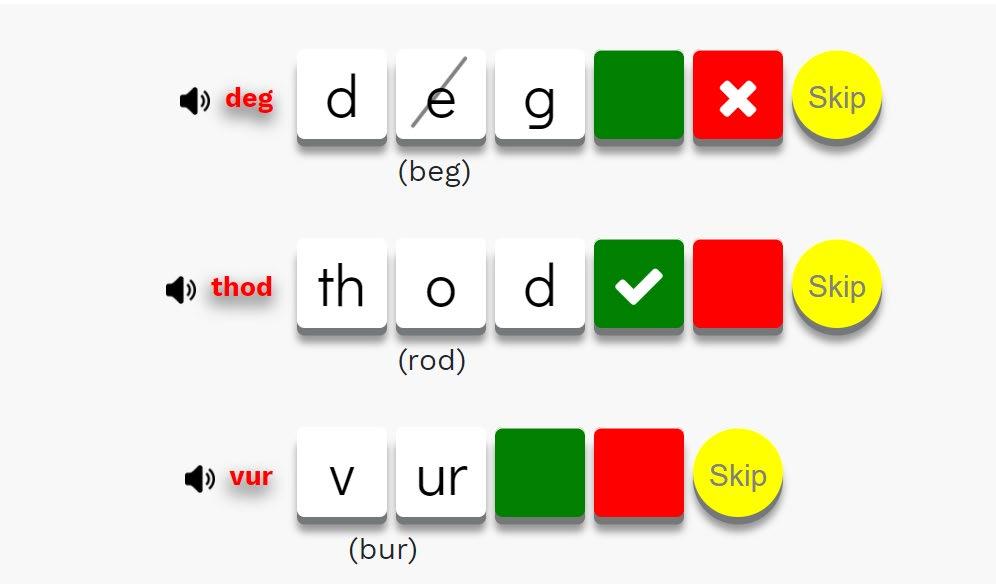
• Technology-based phonics assessment
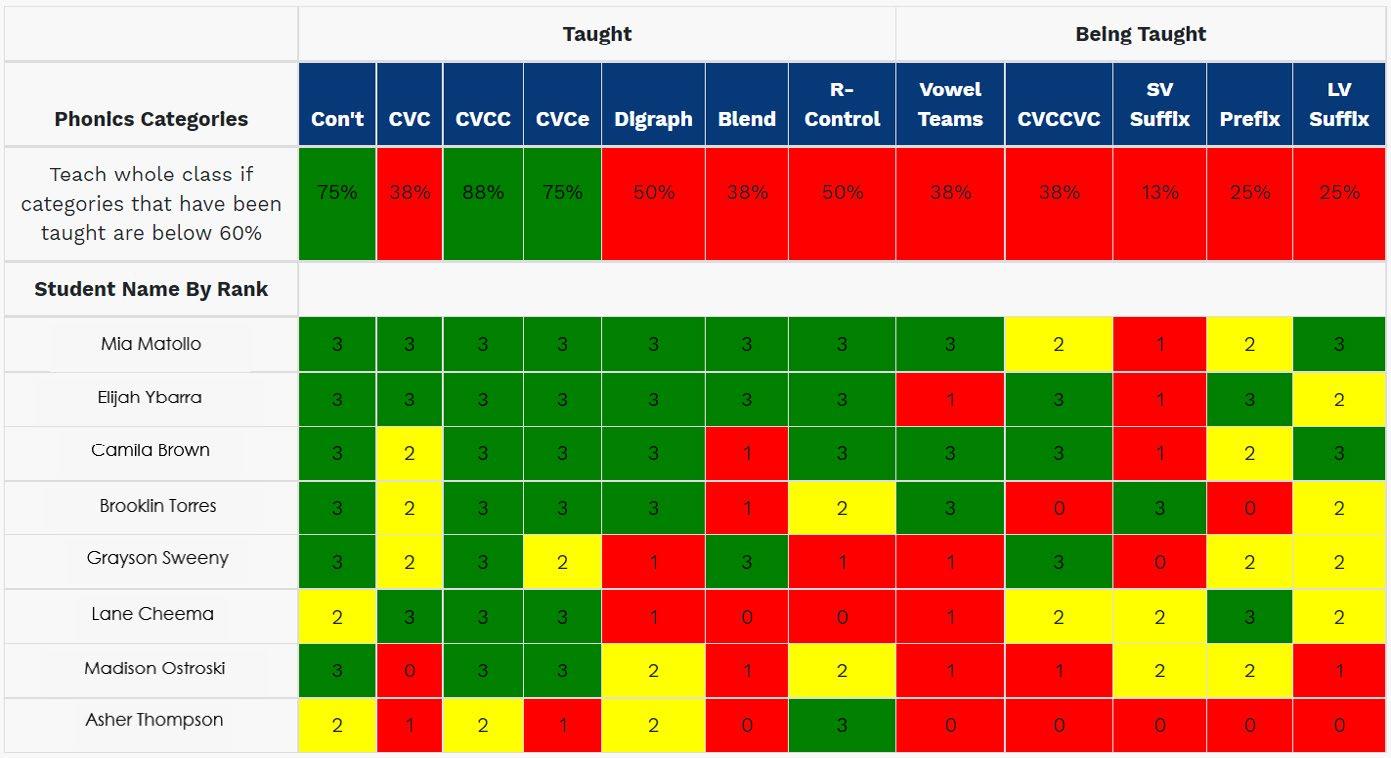

• Based on the Science of Reading
• Designed for students in grades 1–6, and older students who continue to struggle
Actionable: See at-a-glance which phonics categories should be taught to a whole class and which to target for individual students or small groups.
Instructional: Connect assessment results to your phonics curriculum to identify if skills already taught need additional instruction, and if students are learning the skills currently being taught.
Administer online and mark errors as students read nonsense words.
Target instruction with Focus Skills tied to your state learning standards—click the image below to explore the Focus Skills for your state.
Computer-adaptive technology and research-based learning progressions connect assessment and instruction in less than 20 minutes of testing time.
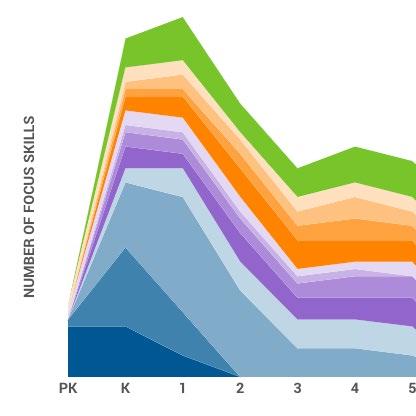
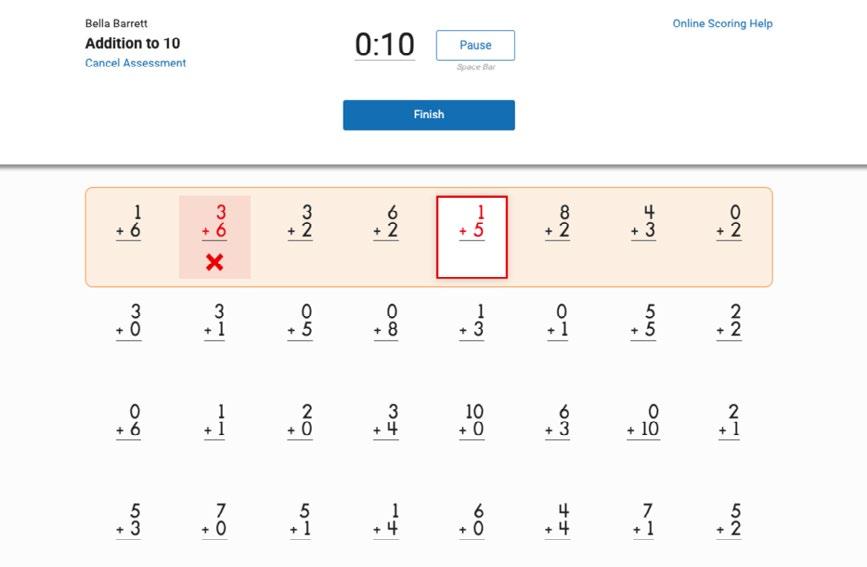
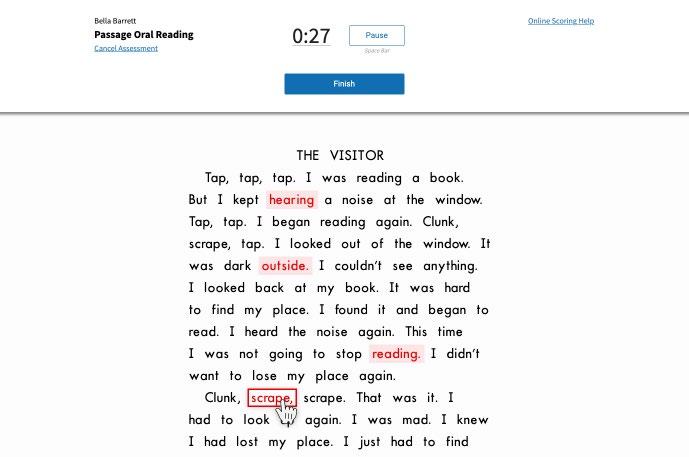
More power with Star CBM Star CBM (curriculum-based measures) assess the building blocks of reading, in English and Spanish, and math that are crucial to students’ future achievement and growth.
Star CBM Reading (K–6)
Star CBM Lectura (K–6) Star CBM Math (K–3)

Un día un niño iba caminando por el campo, junto al río. Escuchó un ruido detrás de un árbol y supo que no estaba solo. Lo que oyó fue una voz muy rara. Asustado, el niño pensó que era un animal enorme. Tenía tanto miedo, que estuvo a punto de salir corriendo hacia su casa.
Entonces vio una rana que saltó desde un charco. La rana volvió a croar. El niño supo que el ruido lo había hecho esa rana. La miró bien. Afuera del agua, la rana se veía muy pequeña. El niño comenzó a reír.
—Así que fuiste tú —le dijo a la rana—. Tú haces ese ruido. Pensé que eras muy grande, pero eres muy pequeña. Ahora sé que no estoy solo, pero ya no tengo miedo.
—Croac, croac —le respondió la rana. Entre risas, el niño siguió caminando hasta su casa. Ahí le contó a su mamá sobre su nueva amiga.

Track students’ performance toward state benchmarks and college entrance exam success. Statistically linked to each state’s summative test, the ACT, and the SAT, Star Assessments are highly accurate predictors of student performance.
Benchmark linking between Star Assessments and college entrance exams makes it easy for students, parents, and teachers to see how their students stack up, as early as sixth grade.
Turn data into insights – giving educators what they need to support every student.

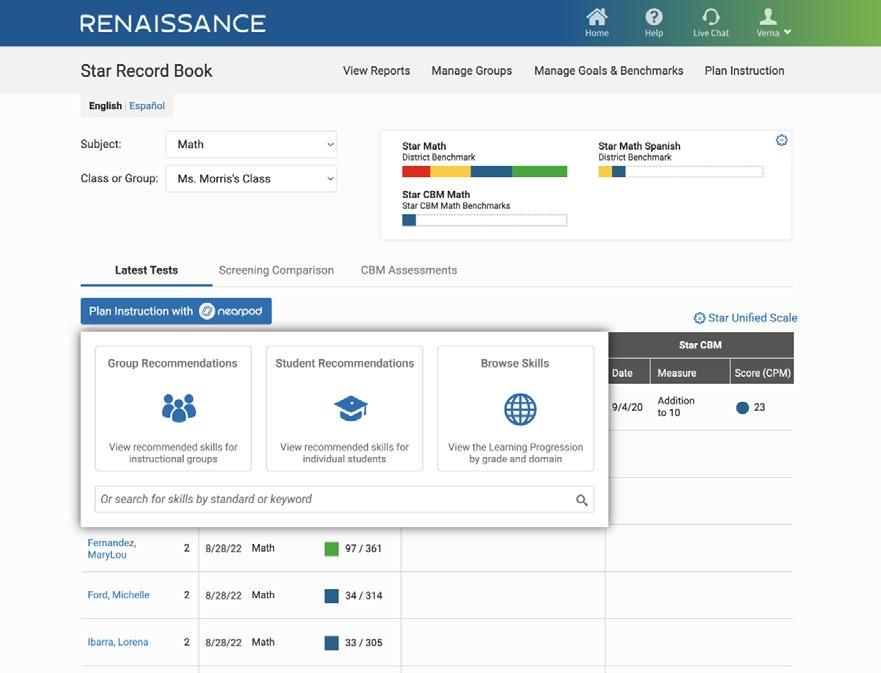
Plan and personalize instruction based on students’ test results in English or Spanish
View skills, including Focus Skills and transferable skills, students are ready to learn in English or Spanish
Tailor instruction with resources from Nearpod, tied directly to skills and standards*
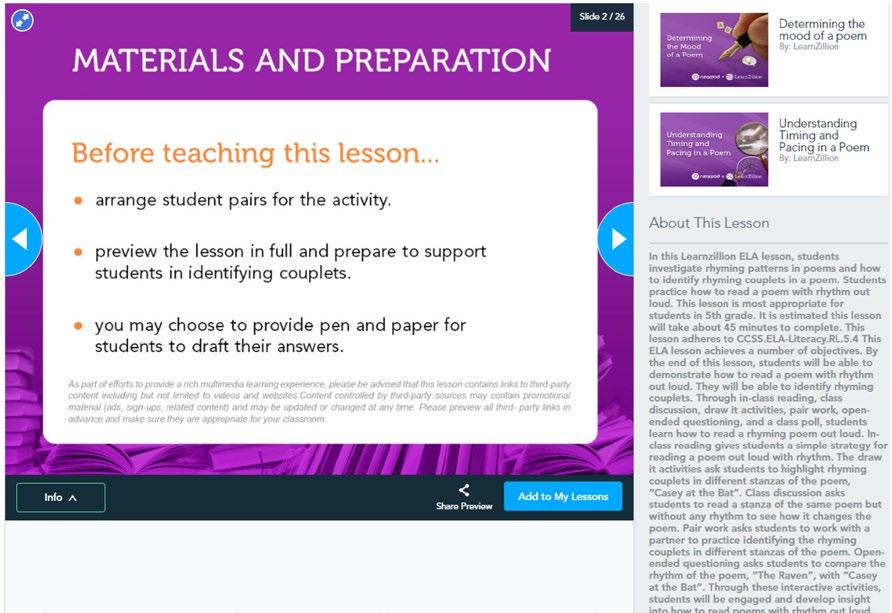
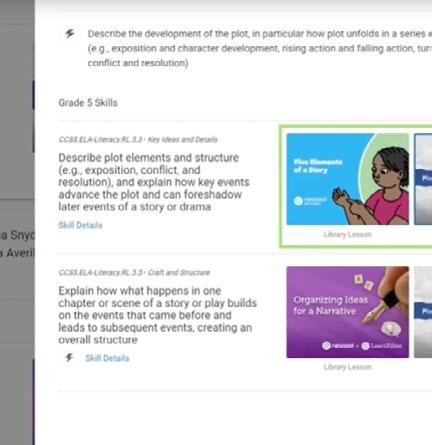
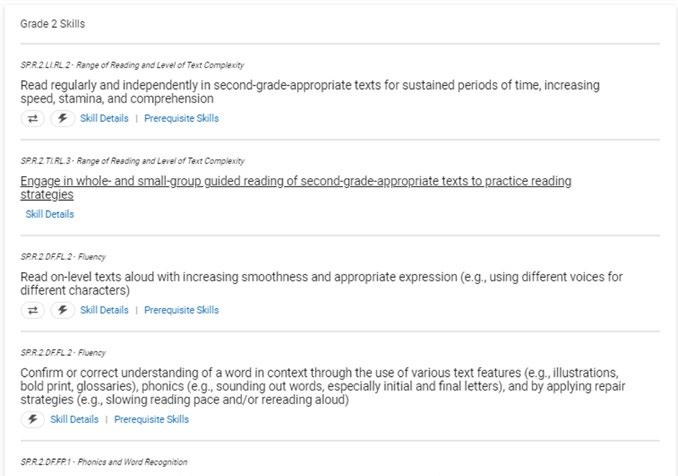
*Nearpod resources currently available for English skills only
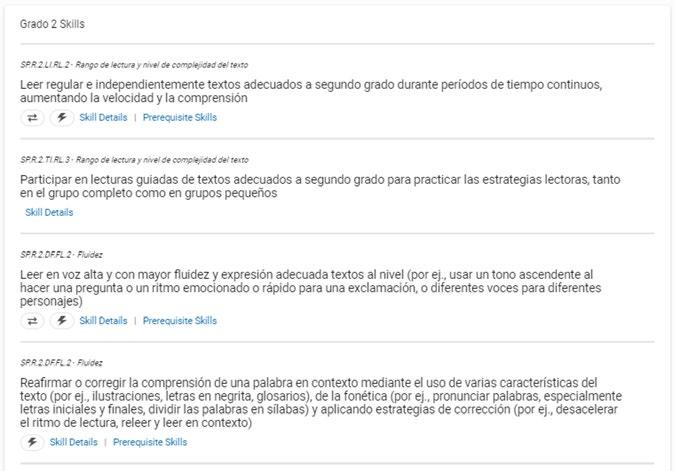


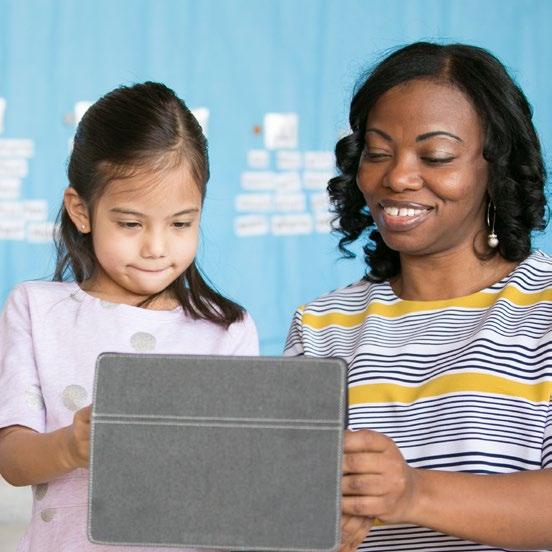

Inform decision making with computer-adaptive tests in English and Spanish
Track K–6 development with one-minute measures administered 1:1
Advance phonics
instruction with accurate screening and diagnostic assessments

Measure instruction with skill-based or custom-built assessments

Give your pre-K–3 students their best start with a literacy and numeracy assessment designed to help you confidently guide every student towards reading proficiency, whether students are learning in-person, remotely, or a combination of both.

Essential
How does Marissa’s performance compare to her peers?
Do Marissa’s scores indicate possible reading challenges or characteristics of dyslexia?
S ) 790
M arissa s Sca ed Sco re s b ased o n th e Star Un if ed sca e
Perc ent i e Rank (PR) 83 M arissa sco red h gh er th an 83% o f stu d en ts n atio n a ly n th e same grad e
G rade E qu valent (G E ) 1 0
Based o n n at o n a n o rms M ar ssa s ear y l teracy sk l s are co mp arab le to th o se o f a ty p ical 1st grad er d u rin g th e rst mo n th o f th e sch o o y ear Th e sco re d o es n o t n ecessar ly n d cate th e ab l ty to read n d ep en d en t y at th s grad e ev el
E st mat ed Oral F uenc y (E st . ORF) -- Est ORF is av a lab le o r tes s taken in grad es 1-3
Lit erac y Classif c at o n Tran sit o n al Class f icatio n Sco re Ran ges Ear y Emergen t Read er (200-682) Late Emergen t Read er 683-784), Tran sit o n al Read er (785-851) Pro b ab le Read e (852-1100)
Test D urat o n & Fide it y 10 min s an d 39 secs
Sub-Domain and Skill Set Scores
Ranging from 0-100, these scores est mate Marissa s percent of mastery on ski ls in each Star Ear y Literacy subdomain at a k ndergarten evel
Which skills is Marissa ready to focus on?
Reading Foundational Skills and Language Skills Assessed
Print Concepts
• Directionality
• Letters and Words
• Word Length
• Word Borders
• Visual Discrimination
• Alphabetic Principle and Sequence
• Print Features
Phonics and Word Recognition
• Spelling-Sound Correspondences: Consonants and Vowels
• Regular and Irregular Spellings
• High-Frequency Words
• Inflectional Endings
• Affixes
Numbers and Operations* Skills Assessed
Counting and Cardinality
• Number Naming and Number Identification
• Number-Object Correspondence
• Sequence Completion
Operations and Algebraic Thinking
• Composing and Decomposing
Measurement and Data
Phonological Awareness
• Syllables Fluency
• Rhyming and Word Families
• Blending, Counting, and Segmenting
Syllables
• Long and Short Vowel Sounds
• Isolating Initial, Final, and Medial Phonemes

• Adding/Substituting Phonemes
• Purpose of Reading
• Reading with Comprehension
• Repair Strategies
• Reading Rate WCPM
• Prosody
Vocabulary Acquisition and Use*
• Word Relationships
• Structural Analysis
• Antonyms
• Multiple-Meaning Words
• Synonyms
• Measurement *Not
See which skills students are ready to learn and support their growth toward becoming independent readers.
One K–12 comprehensive assessment provides all the insights needed to guide literacy growth for emergent readers, struggling readers, and high achievers, whether you are testing in-person, remotely, or a combination of both.
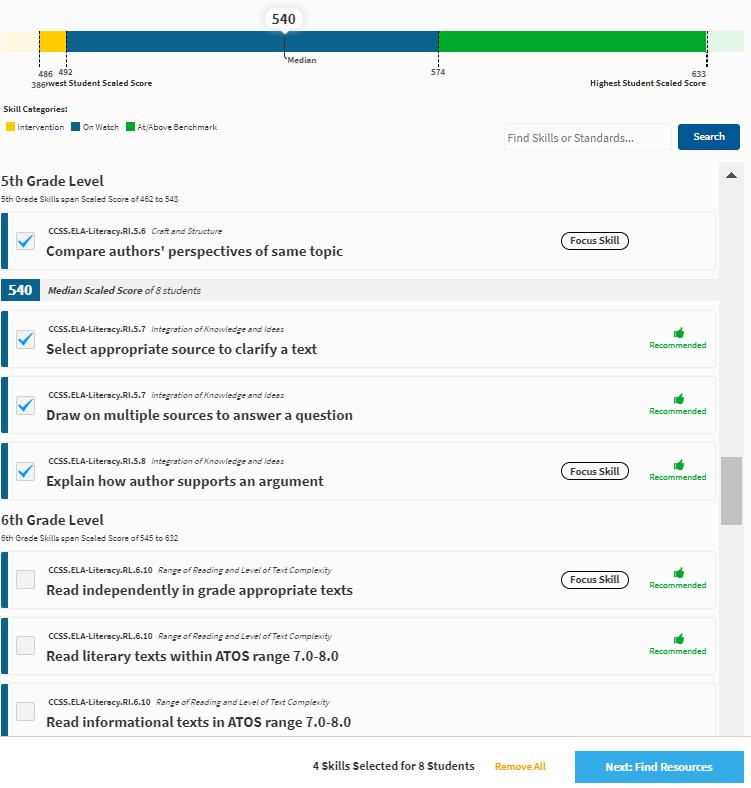

Essential questions answered:
What considerations should be made when creating groups?
Which skills is this group ready to learn?
Which resources will be most helpful for this group?
Foundational, Reading, and Language Skills Assessed
Foundational Skills
• Phonics and Word Recognition
• Inflectional Endings/Affixes
• Fluency
• Purpose of Reading/Reading with Comprehension
Reading: Literature
• Key Ideas and Details
• Character
• Setting
• Plot
• Theme
• Summary
• Inference and Evidence
• Craft and Structure
• Point of View
• Structure of Literary Text
• Word Meaning
• Connotation
• Author’s Word Choice and Figurative Language
• Integration of Knowledge and Ideas
• Modes of Representation
• Analysis and Comparison
• Range of Reading and Level of Text Complexity
Reading: Informational Text
• Key Ideas and Details
• Prediction
• Main Idea and Details
• Inference and Evidence
• Sequence
• Compare and Contrast
• Cause and Effect
• Connections and Relationships
• Summary
• Craft and Structure
• Text Features

• Author’s Purpose and Perspective
• Word Meaning
• Organization
• Author’s Word Choice and Figurative Language
• Connotation
• Integration of Knowledge and Ideas
• Modes of Representation
• Argumentation
• Analysis and Comparison
• Range of Reading and Level of Text Complexity
Language
• Vocabulary Acquisition and Use
• Word Relationships
• Structural Analysis
• Context Clues
• Real-Life Word Connections and Applications
• Vocabulary in Context
• Antonyms
• Multiple-Meaning Words
• Synonyms
• Word Reference Materials
• Figures of Speech
Identify which skills students need to learn to reach grade-level proficiency and achieve mastery.

Which specific phonics skills does the student need help with?
Which phonics skills should be taught whole class vs. small group?
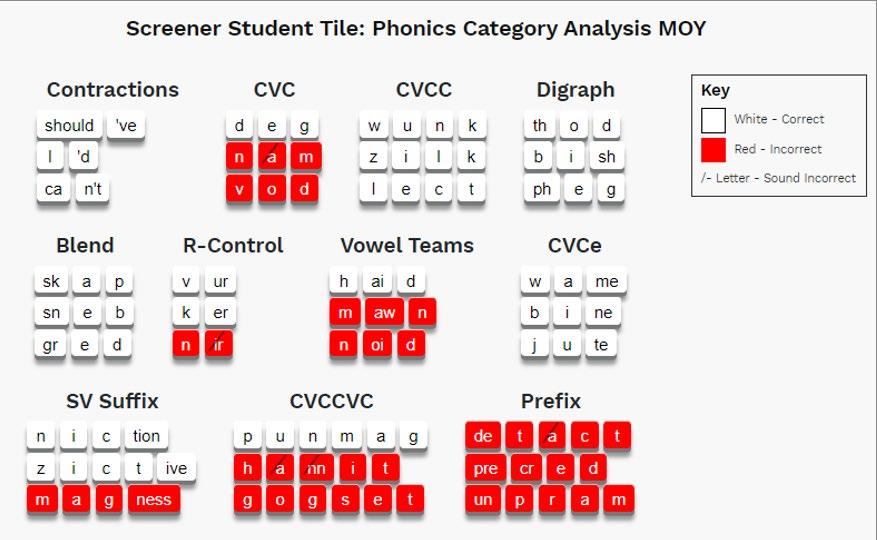
Which students should be grouped for instruction?
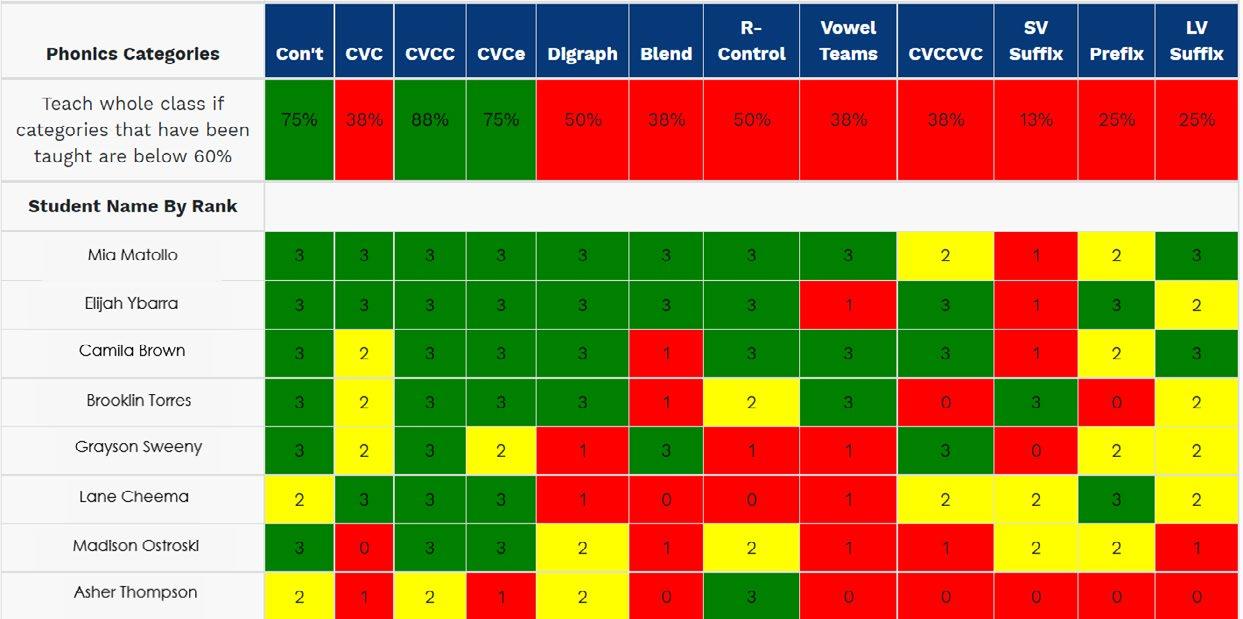
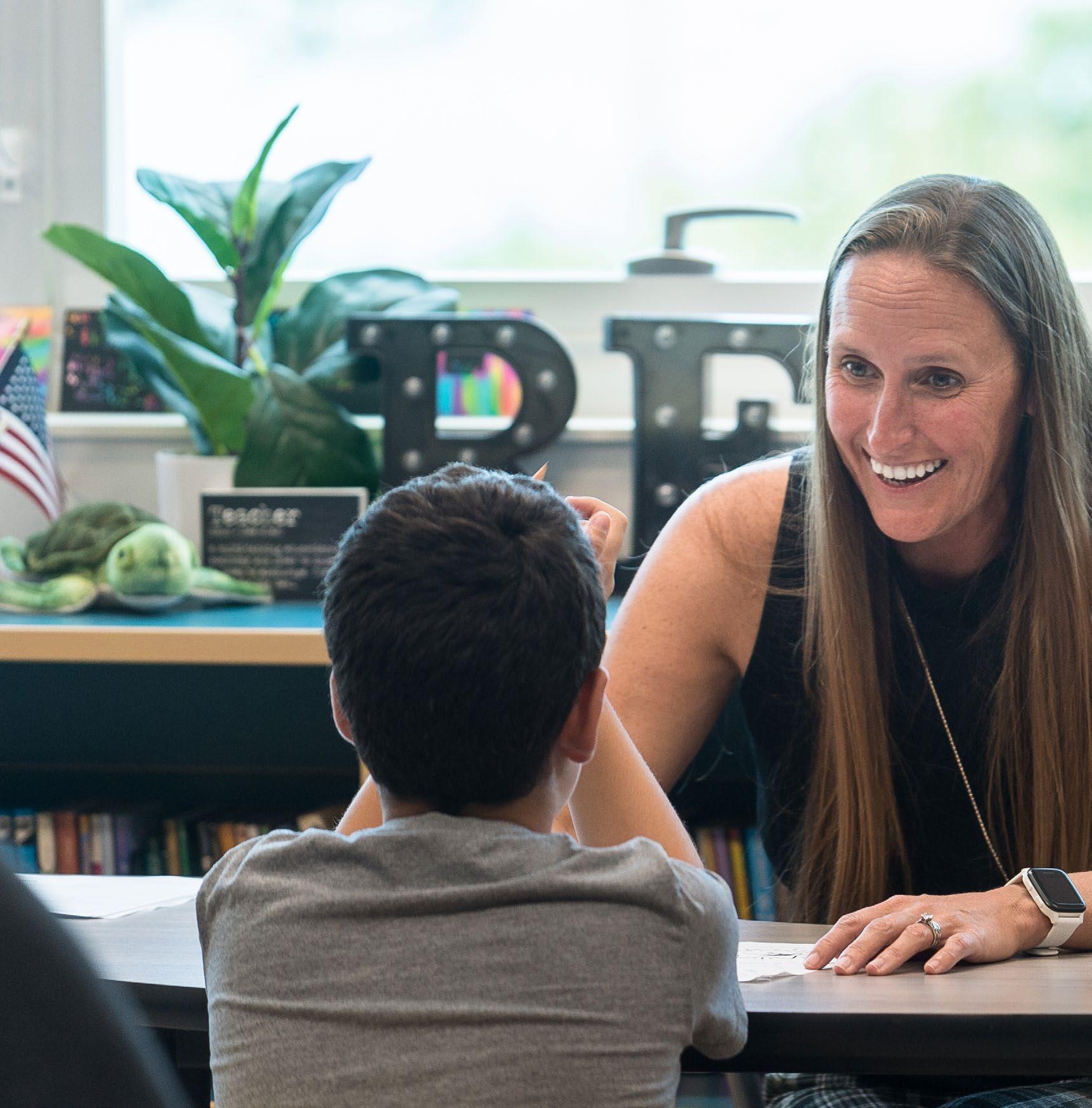
Star Phonics has alignments with the following curricula:

95% Group
Benchmark
Functional Phonics
Fundations
Houghton Mifflin Into Reading
Journeys
Open Court
Orton-Gillingham
Phonics in Motion
Phonics in Motion 2022
Phonics to Reading
Reading Street
Recipe for Reading
SAAVAS
Wonders 2017
Wonders 2023
Star Phonics aligns with Common Core State Standards and has built alignments for specific school and district curricula.
Any of the curriculums listed here may be used with the purchase of a custom scope and sequence or, if possible, a new curriculum alignment can be made.
If a new alignment needs to be created, the Renaissance Provisioning Team will reach out to gather the materials and information they will need in order to create the new curriculum alignment. Set up for new curricula usually takes 3–4 weeks. In the meantime, the Star Phonics Universal Scope and Sequence can be used without risk of losing data.
Star Phonics also has a Universal Scope and Sequence and Generic Curriculum available for no additional cost.

